Tech Fest/Hackathon
On Feb 28th, 2019 at the 2nd edition of the SRM AP Tech Fest Dr. S. Chandrasekhar, Director, CSIR-Indian Institute of Chemical Technology will preside as the Chief Guest. Dr. Chandrasekhar, is a J.C. Bose National Fellow. The inauguration program is from 10.30 a.m. to 12 noon, followed by an Interaction Sessions with Dr. Chandrasekhar.
- Published in Events
Pitchathon 2k19
24-hour event with loads of “getting to know” exercises and a fun competition to top it all.
We start with a founder’s speed dating event and end with a B-Plan pitching competition!
There’ll be food, goodies and loads of fun!
Winners get cash prizes and an experience worth cherishing.
- Published in Events
SRM University, AP – Amaravati celebrates Founder’s Day
Organises a Blood donation camp to honour Founder’s vision to serve the community
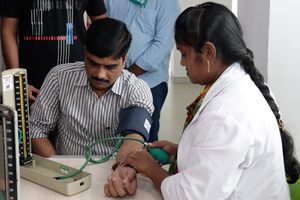
Amaravati, August 24th 2019: SRM University, AP – Amaravati celebrated Founder’s Day by organizing a blood donation camp. More than 120 college students and faculty have donated blood in the camp of which several were first time donors.
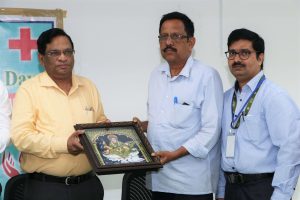 On this occasion, Prof. D. Narayana Rao, Pro Vice Chancellor, SRM University, AP-Amaravati presided over the program and shared the Founder and Chancellor, Hon’ble Member of Parliament, Dr. T.R. Paarivendhar’s vision and generous contributions to the society through various social services activities. “21 educational institutions have been established by SRM management under the leadership of Dr. Paarivendhar and till date around 1.10 lakhs students have passed out from different educational streams. Our Founder’s vision is to provide education to all and has therefore provided scholarships to the tune of Rs. 35 crore till date to the underprivileged sections of the society. The SRM institutions have more than 7,000 employees and 70,000 students currently.” shared Prof. Rao.
On this occasion, Prof. D. Narayana Rao, Pro Vice Chancellor, SRM University, AP-Amaravati presided over the program and shared the Founder and Chancellor, Hon’ble Member of Parliament, Dr. T.R. Paarivendhar’s vision and generous contributions to the society through various social services activities. “21 educational institutions have been established by SRM management under the leadership of Dr. Paarivendhar and till date around 1.10 lakhs students have passed out from different educational streams. Our Founder’s vision is to provide education to all and has therefore provided scholarships to the tune of Rs. 35 crore till date to the underprivileged sections of the society. The SRM institutions have more than 7,000 employees and 70,000 students currently.” shared Prof. Rao.
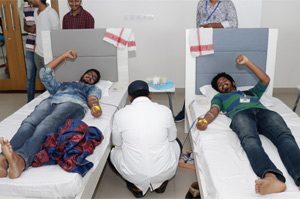 The University’s NSS division organised a blood donation camp together with the international Red Cross society. This was in line with the Founder’s vision to serve the community.
The University’s NSS division organised a blood donation camp together with the international Red Cross society. This was in line with the Founder’s vision to serve the community.
“SRM Management is spending generously for the welfare of the underprivileged people.”, commented, D. Gunasekaran, Registrar, SRM University, AP – Amaravati. The Registrar also motivated and thanked the students by emphasising that blood donation is a big contribution towards the welfare of the society.
Dr. Lakshmi Rajyam, University Medical Officer, SRM University AP-Amaravati encouraged the students and staff to donate blood and explained, “A healthy body is capable of regenerating the blood donated in a few weeks’ time. India needs about 5 crore units of blood annually but has only 2.5 crore units available. This deficit can only be bridged if everyone comes forward to donate.”
Present for this celebration were – ProVC, Registrar, Deputy Registrar, University Medical Officer – Dr. Lakshmi Rajyam and Red Cross Guntur District incharge, Mr. Narasimha Rao along with faculty and students.
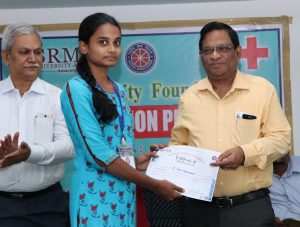 At this occasion, 20 NSS students were awarded certificates for their remarkable contributions to the community. The University got together and cut a cake to mark Founder’s Day.
At this occasion, 20 NSS students were awarded certificates for their remarkable contributions to the community. The University got together and cut a cake to mark Founder’s Day.
Video Link: https://www.youtube.com/embed/ZHih6PGfI-0
- Published in Events
IEEE Membership Brings Worldwide Networking Opportunities
IEEE (Institute of Electrical and Electronics Engineers) with over 120,000 student members is the world’s largest technical professional organization dedicated to advancing technology for the benefit of society. It does so through its highly-cited publications, conferences, technology standards, professional and educational activities.
SRM AP became a member of the IEEE in November 2018 and has 500 student members already.
Agniswar Paul, chair of IEEE SRM AP student branch says, “We will be looking to offer our members numerous professional advantages over and above the curriculum and academic experience. These could be participation at regional conferences, workshops, competitions like student paper contests and even scholarships. Also, opportunities in project/design programs.”
A vast network of member organisations helps create many of these opportunities. IEEE has more than 417000 members in more than 160 countries, more than half of them outside the United States. Student members begin by connecting with local communities active in research and authorship and engaged in important conversations on current and relevant technical topics. Georgy Jose, a student of Chengannur College of Engineering won the third prize from the IEEE Coding Competition, later bagging a placement in an American multinational IT company UST GLOBAL.
“All SRM AP members of the IEEE will gain ample exposure, enough to work on Research Papers and get published in world-class journals. Students will also be mentored to work on ideas perfected by thousands of academicians across the globe. They will also get a chance to attend conferences of their choice in any part of the world depending on their experiences and academic track record”, says Agniswar.
The IEEE Chapter at SRM AP kick-started this semester with a promotional event “GAME OF CLUES” on August 21st.
- Published in Events
Navigating the unknown: Modern technology’s race to the future
Tech Fest 2019 dives into the hot new trends in technology with a lineup of programs like coderace, roborace, 3D printing, IoT workshops, design bootcamps, gaming development, circuit debugging, and deep learning. We explored these technologies, the future and what it holds for humanity with some of the minds behind Techfest – Neelakantam Poorna Venkat, A. Rajesh R Athimoolam, Jaswitha Reddy Guntaka, Sreya Tatineni TP Rao, and Pavan Krishna.
How do you see the future changing with the advent of new technologies?
N. Poorna Venkat: Technology will play the most prominent role in the future with tools and resources that make critical information available at our fingertips. It is fair to say that the future will be totally driven by emerging technologies and hopefully used to solve people’s daily life issues.
A. Rajesh: The advent of new technologies and applications in medicine and communication is at the core. I believe implementation of user friendly technology will continue to shape the way we live.
Jaswitha Reddy Guntaka: On the positive side, more advanced quantum computing and better security for information on the web. On the negative side, a world with zero privacy, less security and AI controlling a major part of human life. I think the protection of web content and the information on it must be given absolute importance.
Sreya Tatineni: We are at a juncture in the history of the world where marvellous new technologies come up every other day changing the course of our lives. I look forward to the future where the reality is closer to our fantasies and imagination which is virtually like we see in sci-fi – automatic cars without drivers, Delhi to NY commute in 30 minutes, colonies elsewhere in the galaxy.
According to you, which technology will be the most important in the coming 5 years?
N. Poorna Venkat: Internet of Things (IoT ) will be the most important technology in five years. It helps us connect to every man made device.
A. Rajesh: According to me, Nanogenerator technology that converts mechanical energy to electrical energy and wirelessly transfers energy to a nearby battery. Scientists from Clemson University have developed a new triboelectric nanogenerator that can generate 2000 volts of energy and transfer it wirelessly.
Pavan Krishna: Sustainable technology will be very important. We should contribute more towards natural environments rather than the technology of artificial holograms, as an example.
Which is the one thing that needs to be changed with the help of technology?
N. Poorna Venkat: Technology should be able to solve daily problems, mainly for farmers. For example, in India the weather forecast technology has to be improved.
A. Rajesh: The future use of drones in healthcare is very thought provoking. How can the industry best use this technology to improve safety and care delivery? For example, through a startup called Matternet. drones have been trained to deliver food aid and medical supplies to areas hit by disasters such as Haiti. But, while drone delivery makes it possible to courier needed vaccines to remote areas in harsh weather, it isn’t without challenges. Both blood and vaccines must be kept at a certain temperature during transport or they will be unusable when they arrive. Anyone working with the payloads must be properly trained to ensure the products arrive at the right temperature and that deliveries go smoothly.
Jaswitha Reddy Guntaka: I think climate change is an issue we can confront with the help of technology – Using simulations to show people what our world can change into in the next 50-100 years might change their perception.
Sreya Tatineni: How great would it be if there is a technology that helps us with the biggest challenge we face today namely law and order? A technology that enables faster solutions to the institutions around the world that fight crime in all forms.
Pavan Krishna: There are many things that have the scope to change with the help of technology because it all depends on that one moment where an idea culminates and transitions into implementation using existing technology, science and knowledge. If I have to be specific, I’d say converting food wastage – it should go into machines either as fuel or it should produce useful products. The machines I refer to should shrink in cost, size and effect to such an extent one can have it safely in the house
Which is your dream technology? Given a chance, which technology will you be looking forward to developing? why and how?
N. Poorna Venkat: My dream technology is one that helps farmers. We need to develop higher yield seeds or breeds that can grow in all weather conditions. This is possible only through modern technology.
A. Rajesh: I foresee a technology that can quantify the ‘feelings’ of people. Other than that, technological developments in healthcare have already saved countless lives and are regularly improving our quality of life.
Sreya Tatineni: Personally, my idea of a dream technology is the one that makes possible flying cars. It would avoid a lot of traffic congestion across the world and also prevent traffic-related catastrophes. How cool would it be to see cars flying across high-rise buildings and landing at any floor of the building as per our convenience?
Pavan Krishna: My dream technology would be Smart Vehicles which can be self-driven, traffic-adaptable (it should analyze the traffic and switch to different modes), its fuel consumption should be environmental friendly and get automatically refilled by different sources of energy?
Which technology intrigues you the most?
N. Poorna Venkat: The new technology that intrigues me is IoT, and how it can be implemented in the agricultural sector.
A. Rajesh: Voice Interface Technology intrigues me the most because voice recognition is changing the user experience and how we operate our daily lives. For example, I use Google Home every waking hour. That is what the power of a new and drastic shift in user interface and user experience can do to help users complete the simplest tasks.
Jaswitha Reddy Guntaka: The technology that intrigues me the most is AR/VR. Although I am not interested in developing it I love playing with it. I currently play Sims 4, a simulation video game.
Sreya Tatineni: As of now, it would be IoT, interrelating a variety of computing devices to transfer data across machines and living beings.
Which is your favorite book/article on technology?
N. Poorna Venkat: I basically read books related to social studies. My favorite is ‘Politics after Independence in India’. I have never actually read a book related to technology.
A. Rajesh: ‘What Technology Wants’ by Kevin Kelly is my favorite book on technology. Its focuses on human-technology relations and argues for technology as the emerging seventh kingdom of life on earth!
Jaswitha Reddy Guntaka: My favorite book on technology would be ‘Digital Fortress.’ If given a chance, I hope to develop a machine similar to the TRANSLTR.
Sreya Tatineni: One of the best ways of understanding the effect of technology on human lives is the book I read recently called “Hit Refresh” by Satya Nadella where he beautifully explains the effect of our unique human quality – empathy – in determining the course of technological advancement and its impact in changing the status quo.
Pavan Krishna: The article I can never forget is on the success of ‘Mission Mangalyaan’ where I realized that all technological advancements need not be costly and knowledge is truly timeless.
Who is the most influential person in the universe of technology and why do you think so?
N. Poorna Venkat: Dr. APJ Abdul Kalam because his hard work towards achieving his goals inspires me a lot.
A. Rajesh: John Giannandrea is the most influential person in technology. As Google’s head of search, Giannandrea is at the heart of the company’s most important business and the world’s most popular website. He’s also an artificial intelligence expert who runs Google’s A.I. efforts. His current position puts him at the juncture of search and A.I., a critical nexus for Google as it prepares for a future dominated by digital assistant software like the Google Assistant and voice-powered hardware like the Google Home rather than text-based queries.
Jaswitha Reddy Guntaka: There are many influential people in this domain of technology and Elon Musk is one of those people with whom I see eye to eye, on a few of his ideas.
Pavan Krishna: The most influential person in technology is Elon Musk because he’s trying to explore everything that is available and possible in this universe – automobiles with Tesla, transportation with Hyperloop, space with ScapeX, Banking with Paypal and many more. The interesting fact to consider is that all his ideas are towards sustainable technologies.
- Published in Events
“UNIVERSITY AS A ‘LIVING LABORATORY’ OF ENVIRONMENT SUSTAINABILITY, SOCIAL CHANGE AND REGIONAL GROWTH”.
“We aim to be at the forefront, bridging the gap between research & policy to actual action & outcomes on the ground which benefit the common people particularly those most affected by the environmental degradation.”
Vice Chancellor Jamshed Bharucha
SRM AP’s social service initiatives, partnered infrastructure development and environment sustainability projects serve as a grassroots level engagement with communities in the surrounding clusters of villages – Saakhamuru, Thullur and Nelapadu to the north, Pedaparami and Kuragallu to the west, and Neerukonda and Nidamaru to its east.
Through the NSS wing SRM Andhra Pradesh delivers social programs to villages (Neerukonda and Kuragallu) and school adoptions (renovations and advisory) blood donation camps, first aid and cancer awareness, cleanliness drives, environment protection (substituting plastics with jute bags,) donations to temples and environment sustainable programs like the university’s 1-acre kitchen garden that grows vegetables as a co-op with local villagers. In partnership with communities SRM AP Amaravati invests in infrastructure projects – working with villagers to build link roads. On campus – mechanised plants and technologies enable the deployment of environment sustainability projects like organic waste management, water harvesting, power conservation units for lights, heating, and generators; sewage treatment plant (treated for gardening and cooling towers) and rooftop solar power generation.
As VC Dr. Bharucha explains it, these programs speak to the university’s broader vision on its role and responsibility to the community and to do so in a manner that is integrated with university academics and policy.

How important are sustainability and environmental issues and how can universities play a part and provide solutions?
Dr. Bharucha: The sustainability of our environment is a collective responsibility for all humans on this earth, for all governments, for all parents and of course for all educational institutions. There is a concept called the ‘tragedy of the commons’ where if each individual person or each family or each company or each nation only pursues their own narrow interests – nobody is looking out for their collective good. The environmental destruction, degradation, is a consequence of the tragedy of the commons where anyone can put pollutants into the atmosphere or into the water system believing that it somehow gets blown away, somehow gets washed away but the research now makes it clear that we all get affected by it. Our health is affected; our well-being is affected.
As an educational institution it is critical that we become models of using the latest scientific knowledge, social organisational policy-related knowledge and to leverage the passions that many of our students and faculty feel about the environmental issues to really set an example. Academia must integrate with real world initiatives – we aim to be a university united with its region in thought and action.

On our locational advantage versus being in an urban setting – working with the surroundings?
Dr. Bharucha: It is a dramatic advantage for us to be located where we are. We, as educators, often tell our students, ‘go outside your comfort zone, make the world a better place, tackle the world’s problems.” So as educational institution we are located in a place where we can actually make a difference as there is a lot work to be done here. Of course there is a lot work to be done everywhere but whether we are talking about clean water, or waste management or energy consumption or air pollution we are in an ideal place to be a living laboratory, to demonstrate how latest research and good organisation of people can create a model – of the university as custodian of key pillars of education, community responsibility, sustainable growth and progress for all. So what I’d like to see is that we start with our campus and consistently and rapidly increase the percentage of energy (that is renewable energy that does not put pollutant in the air). We will have 30% solar power which is a legal requirement but we will seek to go beyond that by integrating our scientific and engineering research on alternate forms of energy. We would like to see what could be done by way of biomass energy production – turn waste into energy. Even maybe turn plastics into energy and maybe untapped wind energy to harvest water, be mindful of the water table levels and to clean the canals and streets that immediately surround our campus, to recycle and eliminate use of plastic. Our aim is to get a campus that does these things and then expand our influence into our communities – street by street, house by house, block by block and eventually village by village.
Combine that with a policy institute that we are considering to create that brings together scholars, researchers, practitioners, and political leaders and activists that brings together their wisdom to devise innovative ways to come up with and look for successful existing models where we can succeed and work with local communities, community leaders, residents and the villagers to show how in fact this is beneficial to them and is not an elitist idea.

What are your thoughts on Self Help groups within the college, biodegradable recycling, working with farmers and teaching them about new technology and better methods of farming, water management, and garbage and waste disposals?
Dr. Bharucha: We have, in our main iconic building, a water management drainage system which is part of the architecture. Currently, the water is used to refresh the ground water and we need to take additional steps to store some of that water for the dry season to reduce the consumption of water that we receive from the municipal supply. We need to make sure that we monitor water quality. As of now, we have started testing it so on campus but we would like to extend that to the canal around our campus and make this information available to local communities and make them aware and understand the national/international standards are for drinking water so that we can reduce disease, particularly childhood diseases are results of and spread by water. So if we can take care of the quality of water, we can eliminate a lot of suffering, illnesses which all drags down the economy.
All of these are incredible ideas and I would like to thank the Hon’ble Member of Parliament, Ms. Meenakshi Lekhi to move forward on it. We would like to explore all of them and set us several committees that will bring together the expertise of our faculty and the passions of our students and then we can connect with the local communities, first with their leaders and also with other organisations which might be on the ground to see where we can make the most difference in any of these areas.
Our higher education institutions have been focussed on theoretical knowledge. It is much more difficult to actually work with cultural, linguistic issues, socio-economic issues in the community than it is to go out and spread the knowledge we have.
This is not something that universities know how to do well but they need to figure it out especially if they are to be potent engines of change for society and for policy.

What I hear from you is that you would like translate the philosophy of the university into a more a practical classroom model to a more practical hands-on experience. So are you planning to create a new classroom model where the students get enough practical experiences in addition to the theory and work with the surroundings?
Dr. Bharucha: The word practical has a lot of historical baggage so what I would say that we have been too theoretical, particularly in the Indian education system. We need to offer applications of it (the teachings imparted). Applications can occur at different levels. We can apply the scientific knowledge in the design of technology, the production of new product/system. One can also apply the knowledge in economics and social sciences, psychology and sociology to try to design organisations that do good community work.
Social entrepreneurship programs aimed at communities give students the opportunity to find where they fit along the spectrum from theoretical (pure sciences, curiosity-driven knowledge) to the practical, the day-to-day tangible, all of which are essential for a university.




- Published in Events
Christmas carnival at SRM AP

This Christmas, SRM AP campus witnessed a two day grand celebration. The student council and volunteers assisted by the Student Affairs department started the preparation 10 days back. The reception area and the grand staircase was decked up with christmas tree, snowman, gingerbread house and a crib.
Christmas Eve celebration on 24th began at 4pm in the reception area with cake cutting ceremony by Prof D Narayana Rao (Pro VC), Prof D Gunasekaran (Registrar), Wng Cmdr Venkataachalam Sekkappan (Director CLM) and Revathi B (Assistant Director- Student Affairs). The celebration then shifted to the grand staircase where the students sang christmas carols, followed by semi-classical dance by 1st year student- Sahithi. Other performances included western dance by Pavan. Antakshari was played among the students to add to the fun quotient. Post a sumptuous dinner, Home Alone was screened at night in the grand staircase.

On 25th evening, faculty and Ph. D scholars joined the students to celebrate Christmas. The wardens of the four hostel towers was given the task to decorate a christmas tree. Each of the residents including the faculty participated to win the best tree decorator award, which was won by the the tower four girls.

At 5 pm, the event kickstarted with fun games such as tug of war between boys and girls separately, passing the parcel and impromptu by 3rd year students- Aakansha Chauhan and Amina. Delicious butter cookies were baked and served before the special christmas dinner. At night, the students enjoyed the movie screening of Polar Express along with piping hot cups of hot chocolate. The Student Affairs department extended their heartfelt gratitude to Sukumar, a student who handled the PA system, Photography Society, and all the students and faculty for successfully pulling off this massive celebration that was enjoyed by all.

- Published in Events
Next Tech Lab students end the year with a win!
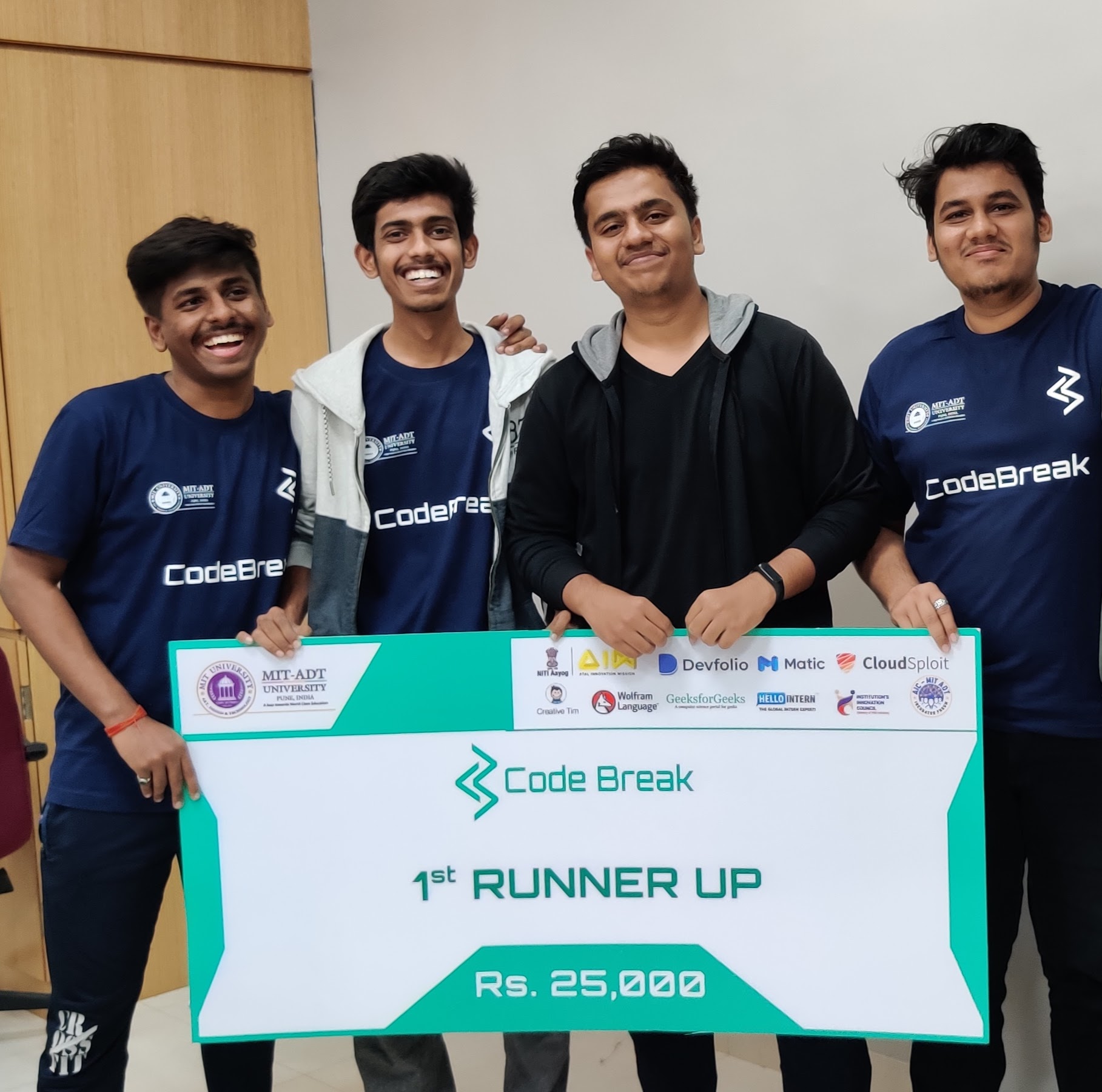
Next tech lab students achieve yet another milestone in Hackathon Codebreak 1.0 organized by MIT ADT University, Pune on 21st and 22nd December, 2019. The team- Rushank Jain, Suraj Maharana, Omkar Ingale, and Ajay Kumar participated from SRM AP in this national level hackathon, where they competed with students from IIIT, BITS, Bennet University, K.J. Somaiya and many more. The panel of judges comprised of experienced personnel from IBM, Siemens, and Xpansion.
Our team built a Virtual Reality application that tackles tourism, medical and social issues. The students mitigated the challenge of not having a 360-degree camera by capturing images on their phone, and doing the laborious work of stitching more than 80 images and later, automated the process by utilizing their skills in OpenCV. The students surmounted all the quandaries and made it to the 1st runners up prize among 40 other teams.

The students expressed their gratitude to SRM University AP for providing the opportunity to attend this hackathon and for fortifying them throughout. “It was my first time participating in a competition at such a large platform. It was an amazing experience competing with so many brilliant minds and learning so much from the exchange. We are expecting 2020 to be full of achievements and fun”, says the young achiever of SRM AP- Rushak Jain.
- Published in Events
SRM AP welcomes the new year with grandeur!
“We felt at home away from home with our friends at SRM AP who have become family”- Apurba Kumar Howlader (3rd year, Mechanical Engineering).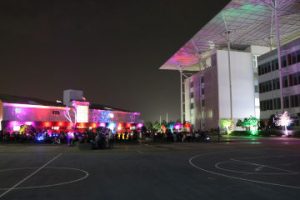
As dusk fell on the eve of the new year, an extravagant celebration was witnessed at the SRM AP campus. The basketball court was stunningly decorated with disco lights, a perfect backdrop for the celebration.
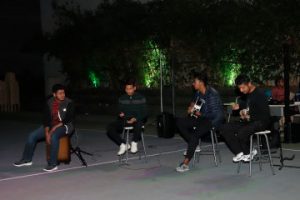
The ambiance was set with soulful performances by “Diversity”-the student’s band led by the lead vocalist Asim along with Suchet B Thapa on guitars, Srijan B Thapa with clap box, and Srijeet Tomrokar as an acoustic guitarist.
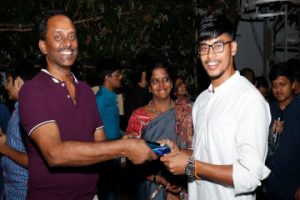
The new year is the time to cherish the fond memories of the passing year before bidding farewell to it. The students participated in the competition “Rewind 2019” where they had to create a video on their memorable moments spent in SRM AP. Sukumar (2nd year, Computer Science Engineering) bagged the first prize in the competition whereas, Parshal Chitrakar (3rd year, Computer Science Engineering) himself narrated his year’s journey on camera to become the runner up.
The much-awaited “DJ Night” began right after where the students grooved to English, Hindi, and Telugu music handpicked by Sukumar. “Nothing could have been better than this celebration right before the turn of the year where we got to spend time with our mates”, says Sreelekha Bhuvaneswari (2nd year, BSc.Physics)

The countdown to 2020 began at midnight and soon enough skyrockets shot off to declare that we stepped into the new year. A cake-cutting ceremony by Wng Cmdr Venkataachalam Sekkappan (Director-CLM) marked the end of the day. Suchet B Thapa (3rd year, Mechanical Engineering) wraps it up aptly by saying, “The jazzy celebration is a 20 on 20 to begin the year 2020”.
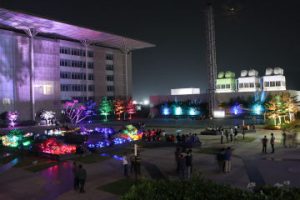 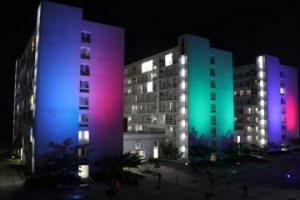 |
- Published in Events
Photography Society celebrates with the innocents
On 10th January 2019, Photography Society- SRM AP’s photography club, began its aspirational journey of helping the students follow their passion in photography. The club is headed by the in-house photographer, Hemanth Kumar K and started off with 25 student members.
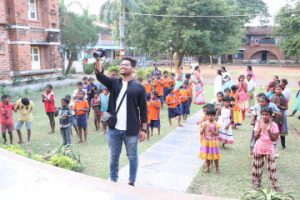
They have come a long way since then and celebrated their first anniversary with 80 kids in the orphanage- Chiguru Children’s Village.
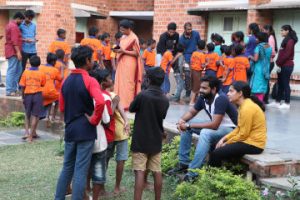
The student members of the club- Hemanth P, Hemanth N, Sathvik P, Jayanth S, Chetan M, Sadwika, and Harini along with their mentor Hemanth, Vineesh Sagar (Manager-Student Affairs), and Neelima Krishnakumar (Student Counsellor) arranged for 240 books, a large cake, and headed off to share their achievement and happiness with the kids at the orphanage.
 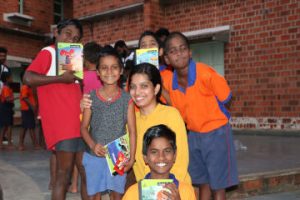 |
The kids ecstatically enjoyed the fun-packed day playing games, eating cakes, and simply running around with the sheer joy of having people around them.
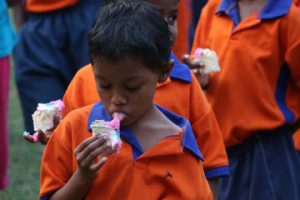 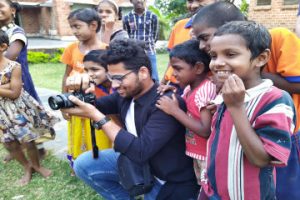 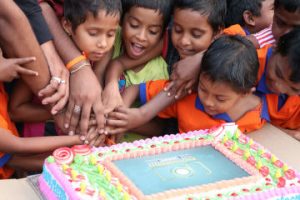 |
Hemanth Kumar says, “All this while we tried being unique when taking photographs, and the will to do something different on our club’s anniversary made us choose to spend the day sharing our happiness with the kids. On seeing them smile, we forgot our own struggles and problems, and thus, we plan to continue doing similar work in the coming days. When we look back a few years from now, we would know we captured the memories of the day in not just our cameras but imprinted them in our hearts”.
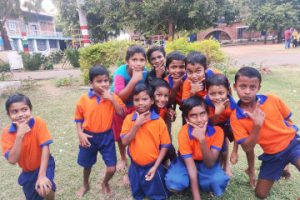
- Published in Events

